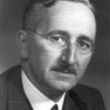Losing ground: American social policy 1950-1980
Description
More Details
Also in this Series
Published Reviews
Publisher's Weekly Review
Murray, coauthor of The Bell Curve, argued that the social programs of the '60s and the '70s worsened the plight of the poor and minorities. This 10th anniversary issue includes a new introduction by the author. (Jan.) (c) Copyright PWxyz, LLC. All rights reserved
Kirkus Book Review
Marshaling a barrage of statistics, Murray, Senior Research Fellow at the Manhattan Institute for Policy Research, lays out the increasingly familiar case that, in an apparent paradox, the Great Society programs had no positive effect on poverty and actually contributed to a decline in the condition of the poor. The main point is that the Great Society marked a shift from the welfare programs of the New Deal: FDR's unemployment, social security, and Aid to Families with Dependent Children programs had been aimed at people temporarily set back in their course through life, while LBJ's food stamp, Medicare, Office of Economic Opportunity, and other programs focused on ""structural"" sources of poverty. The result, Murray says, is that a culture of poverty has arisen characterized by a lack of self-respect, responsibility, and negative expectations--factors that prevent the programs' beneficiaries from rising out of poverty. If we want to improve the lot of the poor, he concludes, we should look to equality of opportunity and to education, and meanwhile eliminate transfer programs that benefit no one, recipient or donor. The case is not really helped much by Murray's statistics since, as he admits, he is forced to use a comparison of blacks with whites as his guide. Though this does conform in part to a poor/nonpoor distinction, it also entails questions of racial attitudes and other factors related to race that cannot be separated out, rendering the statistics at least questionable. That's why the controversy continues, and Murray's faith in thrift, hard work, and individual advancement doesn't add up to a compelling argument against the faith in federal solutions to poverty that is his target. (For that viewpoint, complete to a Great Society defense, see Michael Harrington's The New American Poverty, p. 566.) Copyright ©Kirkus Reviews, used with permission.
Publishers Weekly Reviews
Murray, coauthor of The Bell Curve, argued that the social programs of the '60s and the '70s worsened the plight of the poor and minorities. This 10th anniversary issue includes a new introduction by the author. (Jan.) Copyright 1994 Cahners Business Information.































